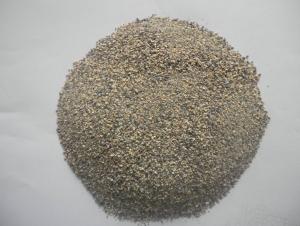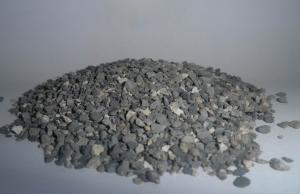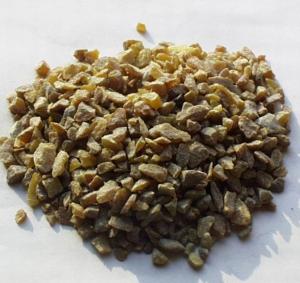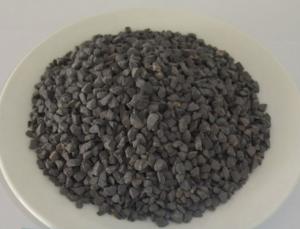Green SIC Ball Raw Materials for Refractory
- Loading Port:
- China Main Port
- Payment Terms:
- TT OR LC
- Min Order Qty:
- -
- Supply Capability:
- -
OKorder Service Pledge
OKorder Financial Service
You Might Also Like
Specifications
green sic ball is a new type of composite deoxidizer for steel makingThe company produces green sic ball is a new type of composite deoxidizer , to instead of ferrosilicon, silicon carbide , carburant ,reduce the amount of deoxidizer and alloying process for smelting deoxy.
Application:
Improve steel quality , improve product quality , improve product new energy , and reduce the amount of alloy added to reduce the cost of steel making , increase economic.
Specifications:
type | Sic% | FREEC% | Si+SiO2% | Fe2O3% | MGO% | H2O% | size |
Lytz- Sic98.5 | ≥98.5 | ≤0.2 | ≤0.06 | <1.5 | 0-30mm | ||
Lytz- Sic98 | ≥98 | ≤0.3 | ≤0.8 | <1.5 | |||
Lytz- Sic97 | ≥97 | ≤0.3 | ≤1 | <1.5 | |||
Lytz- Sic95 | ≥95 | ≤0.4 | ≤1 | <1.5 | |||
Lytz- Sic90 | ≥90 | ≤0.6 | ≤1.2 | <1.5 | |||
Lytz- Sic85 | 85±3 | ≤1 | 8±3 | ≤1.5 | <1.5 | ||
Lytz-Sic75 | 75±3 | 2.5±1 | 17±2 | 3 | 0.10 | <1.5 | |
Lytz-Sic65 | 65±3 | 4.5±1 | 23±2 | 4 | 0.12 | <1.5 | |
Lytz-Sic55 | 55±3 | 4.8±1.5 | 28±3 | 5±2 | 0.16 | <1.5 |


- Q: What is the importance of silicon powder in refractory processing?
- in amorphousness it is mainly the mobility
- Q: What brands are the best in the A-level refractory materials?
- A-level refractory materials: Dulux, Nippon, Carpoly, Skshu and Smoz. Fireproof boards are the most common materials in the market. There are two are commonly used: one is HPL decorative plastic laminates with advantages of fire- ,moisture-, wearproof and oil resistance as well as easy to wash, besides it has a great variety of colors and types. Another one is glass fiber magnesite fireproof board, the out layer of which is decorative materials while the inner layer is mineral magnesium fireproof materials which can resist a high temperature of 1,500 Celsius degree but it is not a good ornament.
- Q: Can anyone say something about the curtain wall fire-proof material key sealing point?
- When sealing the gaps between glass?curtain?wall and floors of all layers and the outer edge of the partition with rock wool or mineral wool, its thickness should not be less than 100mm and should be filled densely; Rock wool or mineral wool for horizontal smoke prevention zone between floors should use galvanized steel sheet whose thickness is not less than 1.5mm to support; The gaps between supporting plate, major structure, curtain wall structure and supporting plate should be filled with fire-resistant glass, whose fire endurance should meet the design requirements. Fire-resistant glass for curtain wall are mainly include monolithic fire-resistant glass as well as the hollow glass and laminated glass made by monolithic fire-resistant glass.
- Q: What are the characteristics of thealuminium oxide refractory?
- Physical properties of refractories include structural properties, thermal properties, mechanical properties, performance and job performance. The structural properties of refractories include porosity, bulk density, water absorption, air permeability and pore size distribution. The thermal properties of refractories include thermal conductivity, thermal expansion coefficient, specific heat, heat capacity, thermal diffusivity and thermal emission rate, ect. Mechanical properties of refractories include compressive strength, tensile strength, flexural strength, torsional strength, shear strength, impact strength, abrasion resistance, creep resistance, adhesive strength and modulus of elasticity, ect.
- Q: whether the fire resistant level of aerated concrete building blocks can reach the grade one?
- it has fire resistant level, incombustible?material,and it should reach grade one level.
- Q: How to make fire resistant materials for building stoves
- Why Qianjun game protected mode can attack the foreign baby call
- Q: The difference between refractory and thermal insulation material
- Refractory refers to inorganic non-metallic material, whose refractoriness is not less than 1,580℃, but refractory is not necessarily insulated material. Inorganic thermal insulated material also belongs to refractory as long as its refractoriness is higher than 1,580℃.
- Q: Is the linear change on reheating the same as heating permanent linear change of refractory material?
- “+”represents expansion. the afterexpansion and aftercontraction after cooled to be at room temperature. The change may significantly damage the masonry of thermal kiln. There are regulations on the linear change on reheating of common refractory material in the national standard. Some physical chemical changes may continue. It is defined as the change from being heated to the specified temperature of refractory material sample. Heat preserving for a while till afte cooling to be at room temperature, then the residual will expand or contract in its length, heat preservation for a while, organization vitrification, the irreversible changes of its length refers to heating the firing refractory to be at high temperature, so as to make the volume of refractory materials expand or contract, due to the influence of uneven temperature or lack of time, otherwise it will cause the deformation of the refractory ball and make this indicator within standard even reach smaller value, so firing control must be strengthened in product production. But it is should not be too high. For refractory materials with same chemical composition, the linear change on reheating is produced in the heating process. Properly increasing sintering temperature and prolonging the holding time is an effective process measures, make its firing inadequate. When subjected to high temperature, it can reduce the thermal shock resistance. Minus sign "-" represents contraction. The permanent line rate refers to heating the fire refractory ball to the specified temperature. Linear change on reheating, also known as residual linear change, is an important indicator to assess the quality of refractory in the long time use. To control the permanent line rate within the standard or reach the minimum value.
- Q: On the problem of making refractory materials
- Refractories mainly depend on their high melting point characteristics. The refractory market is mainly Magnesium Oxide material.
- Q: Who knows what kind of fire protection material is better?
- Characteristic of polyurethane rigid foam thermal insulation decorative composite board: (1) ultra high cost performance, increased property's selling point (high cost performance) new model of thermal insulation material, excellent thermal insulation properties, elegant decorative effect, 50 years of service life, reduce maintenance costs and social waste. (2) it overcomes defects of traditional insulation technology (to solve the freezing and thawing, veneer cracking and shedding) traditional benzene board, the phenomenon of freezing and thawing that is easily appear in plastic extruded sheet, paint finish is easy to crack; its veneer facing can easily fall off; thermal insulation materials and wall are poorly adhered, easy off the whole. There is a themal bridge in dry hanging wall. (the characteristics of polyurethane composite board)
Send your message to us
Green SIC Ball Raw Materials for Refractory
- Loading Port:
- China Main Port
- Payment Terms:
- TT OR LC
- Min Order Qty:
- -
- Supply Capability:
- -
OKorder Service Pledge
OKorder Financial Service
Similar products
Hot products
Hot Searches
Related keywords




























